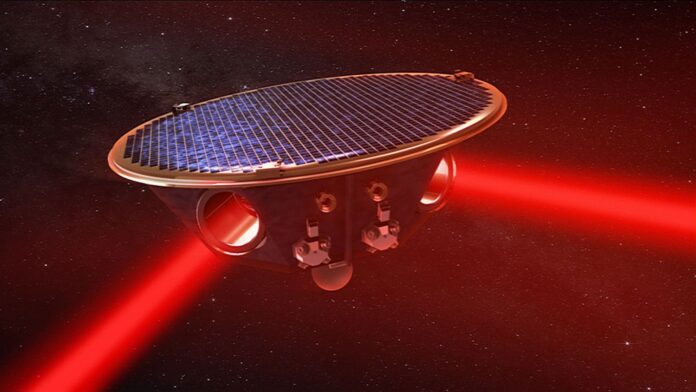NASA has collaborated with the European Space Agency (ESA) to launch the first space-based observatory designed to detect gravitational waves. The observatory has passed a major review and will proceed with the construction of flight hardware.
On January 25, ESA (European Space Agency) announced the formal adoption of LISA, the Laser Interferometer Space Antenna, to its mission lineup, with launch slated for the mid-2030s.
“In 2015, the ground-based LIGO observatory cracked open the window into gravitational waves, disturbances that sweep across space-time, the fabric of our universe,” said Mark Clampin, director of the Astrophysics Division at NASA Headquarters in Washington. “LISA will give us a panoramic view, allowing us to observe a broad range of sources both within our galaxy and far, far beyond it. We’re proud to be part of this international effort to open new avenues to explore the secrets of the universe.”
NASA will contribute to LISA’s scientific instruments and provide science and engineering support. NASA’s role includes providing lasers, telescopes, and devices to reduce disturbances from electromagnetic charges. LISA will use these components to detect subtle changes in distance induced by gravitational waves across millions of miles in space. ESA will be responsible for the spacecraft and lead the international team during the mission’s development and operation.
Gravitational waves were predicted by Albert Einstein’s general theory of relativity more than a century ago. These waves are created by accelerating masses like a pair of orbiting black holes, which eventually merge over millions of years as the distance between them gradually shrinks.
These ripples in the fabric of space went undetected until 2015, when the Laser Interferometer Gravitational-Wave Observatory (LIGO), funded by the US National Science Foundation, measured gravitational waves from the merger of two black holes. This groundbreaking discovery has opened up a new field of science known as “multimessenger astronomy,” where gravitational waves can be used in combination with other cosmic “messengers,” such as light and particles, to study the universe in innovative ways.
LIGO has since observed dozens more black hole mergers and mergers of neutron stars and neutron star-black hole systems. The black holes detected through gravitational waves have been relatively small, with masses of tens to a hundred times that of our Sun.
However, scientists believe that in the early universe, mergers of much more massive black holes were common when the universe was young, and only a space-based observatory could be sensitive to gravitational waves from them.
“LISA is designed to sense low-frequency gravitational waves that instruments on Earth cannot detect,” said Ira Thorpe, the NASA study scientist for the mission at the agency’s Goddard Space Flight Center in Greenbelt, Maryland. “These sources encompass tens of thousands of small binary systems in our own galaxy, as well as massive black holes merging as galaxies collided in the early universe.”
LISA space-based observatory will consist of three spacecraft arranged in a vast triangular formation that follows Earth in its orbit around the Sun, each arm of which will stretch 1.6 million miles (2.5 million kilometers). The spacecraft will track internal test masses that are affected only by gravity while continuously firing lasers to measure their separations with a precision smaller than the size of a helium atom. When gravitational waves from space pass through the LISA triangle, they will produce oscillations in the lengths of its arms, and LISA will capture these changes.
LISA’s underlying measurement technology was already demonstrated successfully in space during ESA’s LISA Pathfinder mission, which ran from 2015 to 2017 and involved NASA participation. The mission conclusively demonstrated the exquisite control and precise laser measurements required for LISA.
